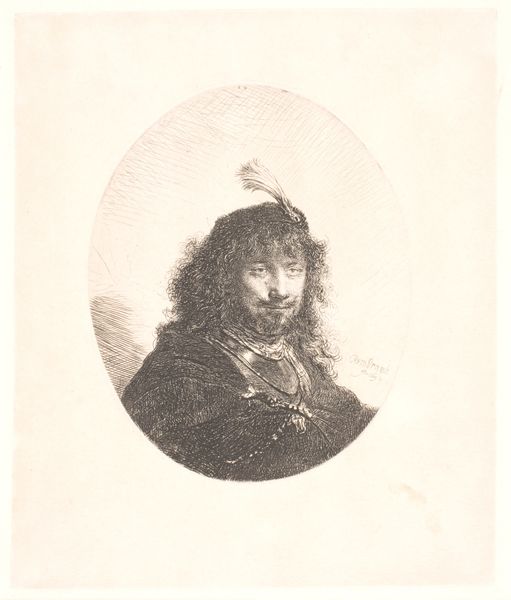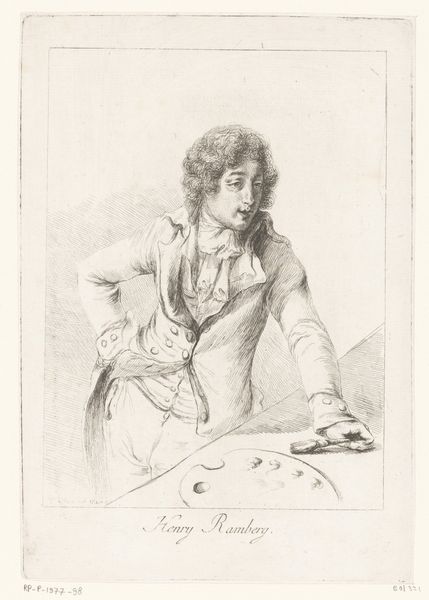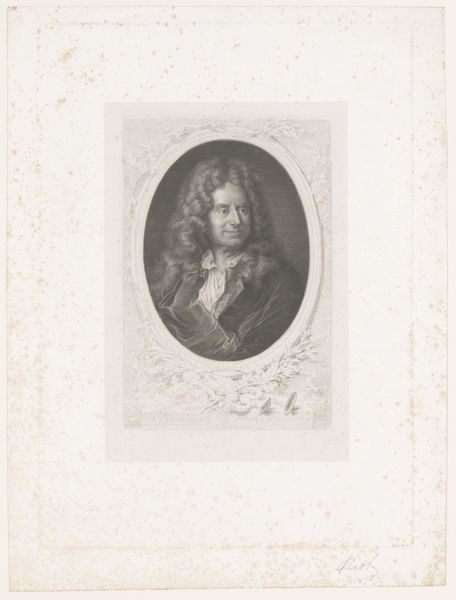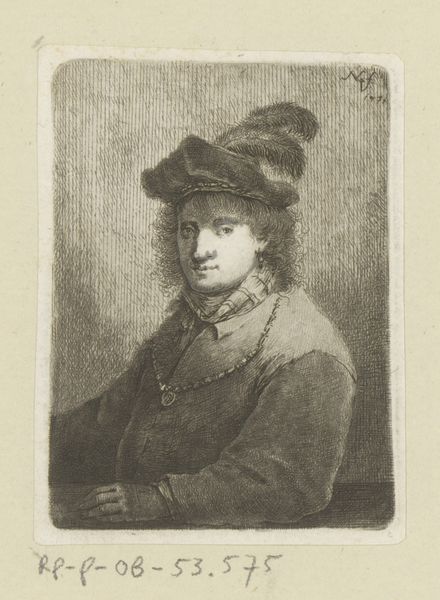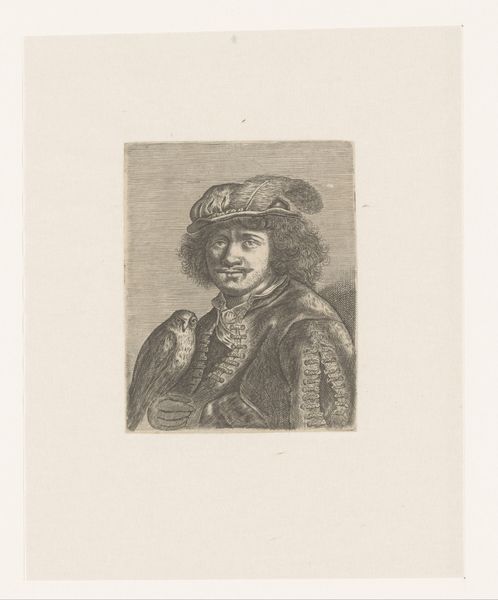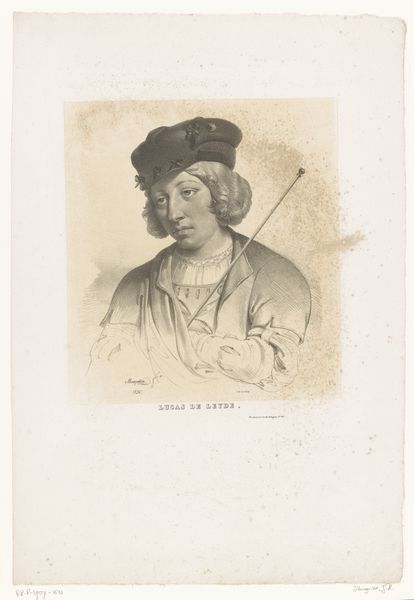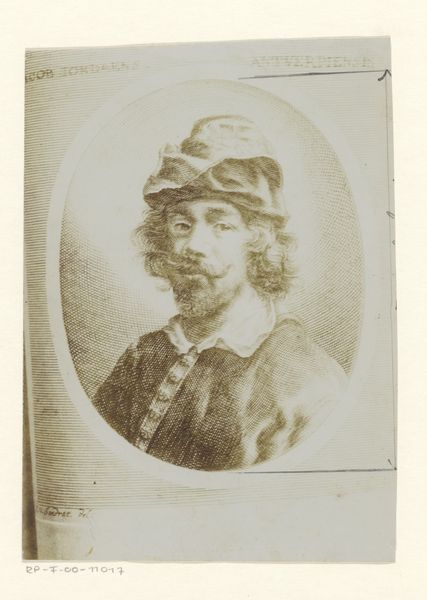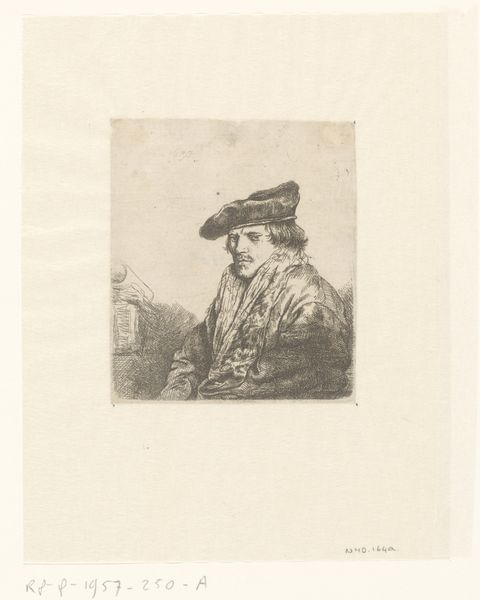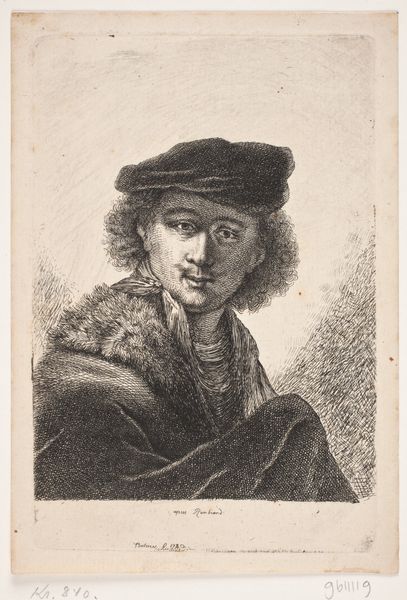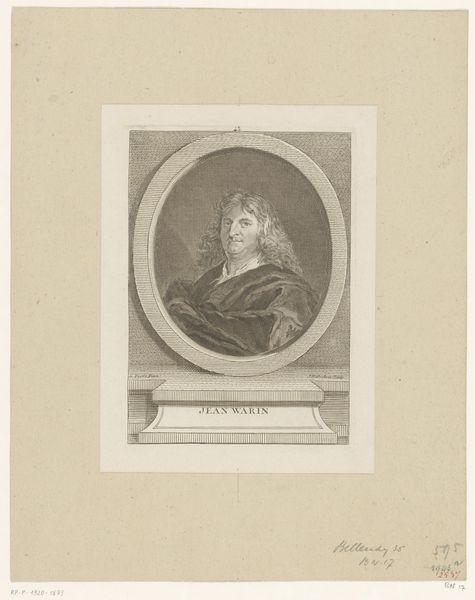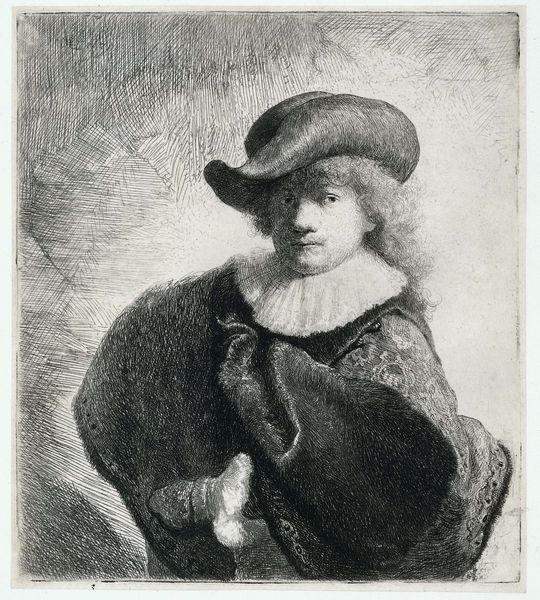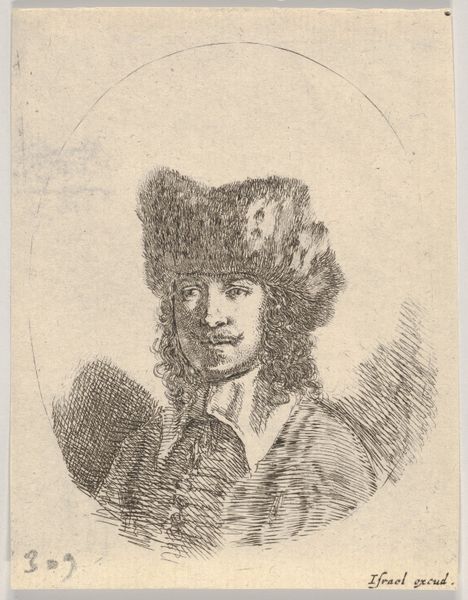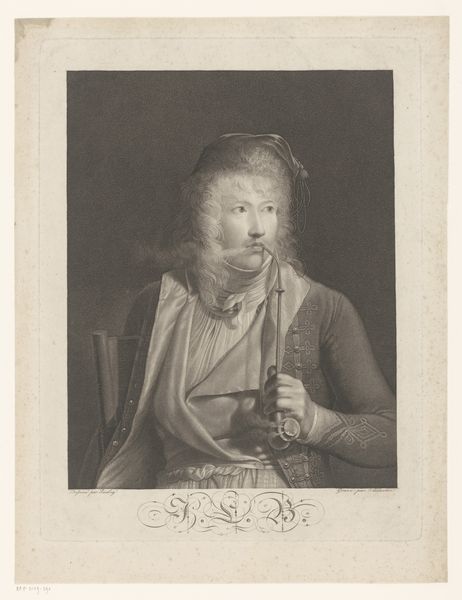
drawing, engraving
#
portrait
#
drawing
#
romanticism
#
engraving
Dimensions: height 440 mm, width 304 mm
Copyright: Rijks Museum: Open Domain
Curator: Immediately striking is the figure's languid pose. It conveys a quiet sense of contemplation. Editor: Indeed. The artwork before us is titled "Portret van Gerard Dou" crafted between 1823 and 1827 by Nicolas Maurin. It’s an engraving, demonstrating a Romantic style of portraiture. Curator: Engraving as a medium situates this piece within specific material conditions of reproduction. Consider the labor involved: the engraver's skill, the printing press, the availability of paper and ink. This wasn't just artistic creation; it was artisanal production. Editor: I appreciate that context. The visual precision here is undeniable. Notice how Maurin meticulously rendered Dou’s facial features and the textures of his clothing. The subtle gradations of light and shadow create a compelling sense of depth and volume. Curator: Right, the shadow highlights a possible relationship with ideas about genius in the artistic production. Dou, represented with an intellectual object next to his hands, in this context speaks to labor being about both hand and the intellectual practice of an artist. Editor: Observe the pose. His hand gently rests on what appears to be a classical bust, a conventional attribute but it lends the composition a balanced stability but the model seems tired. There’s a gentle interplay of horizontal and vertical lines, creating a visual harmony. Curator: And we can't ignore how this piece fits within the broader 19th-century art market. Who was buying these engravings? What was their social status? This image served a purpose in constructing and disseminating artistic identity, a commodity circulated among a specific class. Editor: It's true that seeing the labor in making creates new pathways to approach images such as this portrait. What starts out as a quest into what the author might have felt at a particular point expands outwards, thanks to labor and context. Curator: Exactly, what starts with labor evolves into how artists continue the processes and how this can further create cultural impact for consumers. It shows not just what the art stands for, but how deeply rooted the labor itself plays in creating more artworks for many.
Comments
No comments
Be the first to comment and join the conversation on the ultimate creative platform.
